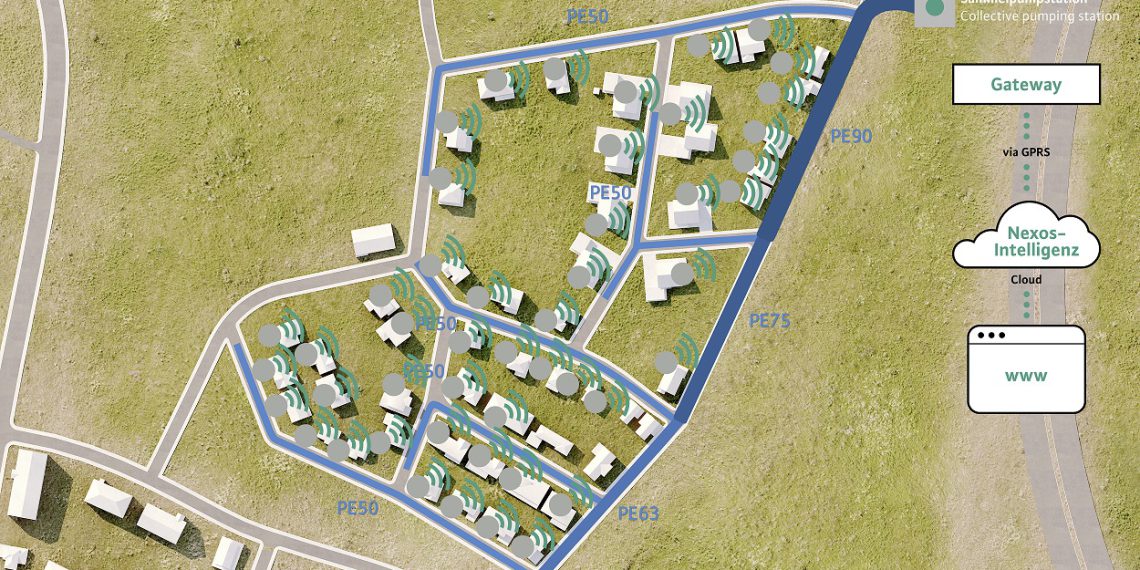Tczów is a small municipality in Poland, roughly 120 kilometres outside Warsaw. It has 4,500 inhabitants and covers an area of 72 square kilometres. Nevertheless, this small town still manages to stand out from other rural municipalities. High-tech farms, sporting facilities, new roads – mayor Andrzej Wolszczak has comprehensive investment plans for the future. For example, he instigated a year-long series of intensive tests in co-operation with Wilo Poland for a system to control and monitor the pressure drainage. Wilo installed a pressure drainage system here ten years earlier. In comparison, this was not just cheaper than a gravity drainage system, but also permitted provision to all of the inhabitants. Once in use, it became clear that one pipe was particularly susceptible to clogging. Besides the inconvenience to the inhabitants, it was necessary to use large amounts of fresh water in order to flush the system properly. The solution first came as a test version. Tczów thus became the first municipality to test pressure drainage with Nexos Intelligence.
A new control system takes care of the networking
Over 750 pumping stations are installed in the households of the small town. 185 of these are monitored by software. The use of the new control system reduces the pumps’ energy consumption by up to 30 percent. This is achieved by distribution of the daily inflow peaks, during which the system is under heavy load — such as on public holidays.
During times when the system is under less load, the software ensures that the minimum flow rate of 0.7 m/s is also assured in the collector pipes to avoid the risk of clogging due to deposits. “As soon as a fault occurs, the source of the problem and the reason for it can be identified using the fault patterns in the system. For example, it could be due to clogging in the pipes or the rainwater supply”, says Andrzej Szeroki, Business Developer at Wilo SE and creator of the software. “Areas where faults have occurred are highlighted on the screen and the response time of the municipality maintenance personnel is reduced. In addition, the system can call up daily, monthly or annual statistics for the plant.” The basis for the information which the control system uses is the location of the pumping station, the diameter of the piping connected to the station and its current sewage level. Based on this, the system sets the sequence of the pumping station start-up. In this way, the minimum flow rates can be ensured even in times of low sewage quantities – also avoiding excessive counter pressure at the end pumping stations when there is high amounts of sewage. The software can be easily integrated into existing or new systems. It is independent of pump manufacturer and pump model, regardless of whether positive-displacement pumps or centrifugal pumps are used.
Pressure drainage systems with Nexos Intelligence
Pressure drainage systems can offer a flexible and sustainable solution where building a sewer system is not possible or economically viable. A further advantage for the operators can be found in the low installation costs, because there is no need for expensive underground civil engineering work. However, the drainage systems can also present challenges: usually a few or most of the pumps run simultaneously, as the sewage volumes vary depending on the time of day or year. Consequently, pumping stations are not continuously in operation, which means that pressure drainage systems transport too little sewage about 70 % of the time. The irregular volume flows increase energy costs and cause deposits or even lead to clogging in the pipes that the operators – usually municipalities – then have to rectify at high cost. The intelligent solution ensures compliance with optimal flow rates in the collector pipelines and collective pumping stations while also minimising the risk of deposits and clogging. The pumps also benefit from this system as they operate at optimum levels.

















